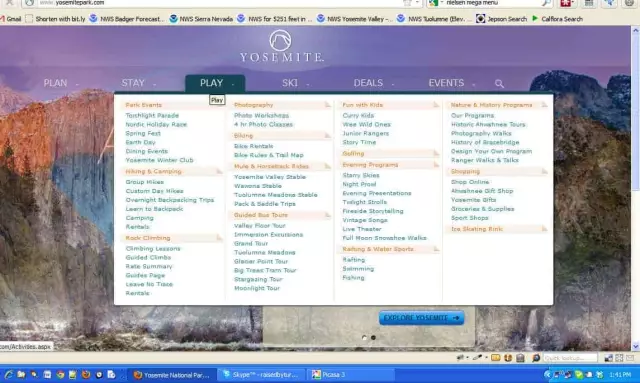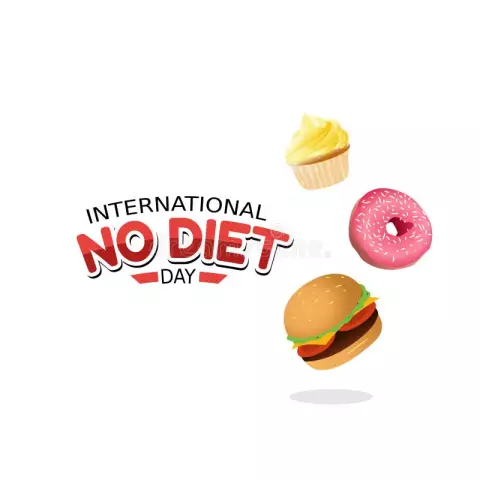- Author Rachel Wainwright [email protected].
- Public 2023-12-15 07:39.
- Last modified 2025-11-02 20:14.
Coldfree
Coldfree: instructions for use and reviews
- 1. Release form and composition
- 2. Pharmacological properties
- 3. Indications for use
- 4. Contraindications
- 5. Method of application and dosage
- 6. Side effects
- 7. Overdose
- 8. Special instructions
- 9. Application during pregnancy and lactation
- 10. Use in childhood
- 11. In case of impaired renal function
- 12. For violations of liver function
- 13. Drug interactions
- 14. Analogs
- 15. Terms and conditions of storage
- 16. Terms of dispensing from pharmacies
- 17. Reviews
- 18. Price in pharmacies
Latin name: Coldfri
ATX code: N02BE71
Active ingredient: paracetamol (Paracetamol); phenylephrine hydrochloride (Phenylephrine hydrochloride); Chlorphenamine maleate; caffeine (Caffeine)
Manufacturer: Medley Pharmaceuticals, Ltd. (Medley Pharmaceuticals, Ltd.) (India)
Description and photo updated: 30.11.2018

Coldfree is a combined remedy for the symptomatic treatment of colds and acute respiratory diseases (ARI).
Release form and composition
Dosage form - tablets (day + night): round, flat, beveled, with a line on one side and the MedZey logo on the other side, daytime - light yellow, night - light green; surface roughness and the presence of marbling in color are allowed [in a blister strip of 9 tablets (6 day and 3 night), in a cardboard box 1 package and Coldfree instructions for use].
Active ingredients in 1 daily tablet:
- paracetamol - 500 mg;
- phenylephrine hydrochloride - 5 mg;
- chlorphenamine maleate - 2 mg;
- anhydrous caffeine - 15 mg.
Auxiliary components of daily tablets: gelatin, povidone, corn starch, magnesium stearate, propyl parahydroxybenzoate, methyl parahydroxybenzoate, quinoline yellow dye, iron oxide yellow dye.
Active ingredients in 1 night tablet:
- paracetamol - 500 mg;
- phenylephrine hydrochloride - 10 mg;
- chlorphenamine maleate - 4 mg.
Auxiliary components of night tablets: gelatin, povidone, corn starch, magnesium stearate, propyl parahydroxybenzoate, methyl parahydroxybenzoate, quinoline yellow dye, brilliant blue dye.
Pharmacological properties
Pharmacodynamics
Coldfree is a combined drug, the action of which is due to the properties of its active ingredients:
- paracetamol is an antipyretic and analgesic non-narcotic agent that reduces fever and reduces the pain syndrome observed in colds, manifested by headache, sore throat, joints and muscles;
- phenylephrine is an adrenergic agonist, a stimulator of α1-adrenergic receptors of blood vessels, primarily located in the venules and cavernous-venous sinuses of the nasal mucosa, which has a vasoconstrictor effect, which reduces edema and hyperemia of the paranasal sinuses and mucous membranes of the upper respiratory tract, which helps and eliminates nasal congestion rhinorrhea;
- chlorphenamine - a blocker of H1-histamine receptors, which has an antihistamine effect, manifested by the elimination of itching in the eyes, nose and throat, swelling and hyperemia of the mucous membranes of the nasal cavity, nasopharynx and paranasal sinuses, as well as a decrease in exudative manifestations;
- caffeine is a psychostimulant substance that has an exciting effect on the central nervous system, as a result of which fatigue and drowsiness decrease, and physical and mental performance increases. Coldfree Nightly Tablets are caffeine-free to help you sleep better.
Pharmacokinetics
Information not provided by the manufacturer.
Indications for use
Coldfree is used for symptomatic treatment (elimination of rhinorrhea, pain syndrome and fever) of colds, flu and acute respiratory diseases.
Contraindications
Absolute:
- severe arterial hypertension;
- severe atherosclerosis of the coronary arteries;
- severe diabetes mellitus;
- children under 12 years old;
- period of pregnancy and lactation;
- simultaneous use of MAO (monoamine oxidase) inhibitors, tricyclic antidepressants, beta-blockers;
- combined intake of drugs containing components that are part of Coldfree as active substances;
- hypersensitivity to any component of the drug.
Relative (Coldfree is used with caution, after a careful assessment of the benefits and risks):
- hyperplasia of the prostate;
- angle-closure glaucoma;
- blood diseases;
- pheochromocytoma;
- deficiency of glucose-6-phosphate dehydrogenase;
- chronic obstructive pulmonary disease;
- bronchial asthma;
- hyperthyroidism;
- congenital hyperbilirubinemia (Rotor, Gilbert and Dubin-Johnson syndromes);
- hepatic / renal failure.
Coldfree, instructions for use: method and dosage
Coldfree Day and Night Tablets should be taken by mouth with water, milk, or fruit juice.
Recommended dosage: 1 daily tablet (light yellow) is taken in the morning and afternoon, 1 night tablet (light green) - at night. In total, 3 tablets are taken per day.
The recommended course of treatment is up to 3 days.
Side effects
Coldfree is generally well tolerated. Side effects are rare, mainly due to long-term use of the drug in high doses.
Possible adverse reactions:
- from the gastrointestinal tract: rarely - flatulence, diarrhea or constipation, nausea, vomiting; with prolonged use of high doses of the drug - pain in the epigastric region, hepatotoxic effect;
- on the part of the cardiovascular system: in isolated cases - shortness of breath, increased blood pressure (especially in patients with arterial hypertension), heart pain, reflex bradycardia, tachycardia;
- from the central nervous system: rarely - general weakness, headache, fainting, a sense of fear; in isolated cases - insomnia, psychomotor agitation, anxiety, irritability or nervousness, confusion, tremor, depressive conditions, tinnitus, tingling and heaviness in the limbs, disorientation, epileptic seizures, coma;
- from the blood system: very rarely - thrombocytopenia, methemoglobinemia, hemolytic anemia; in isolated cases - pancytopenia, neutropenia, sulfhemoglobinemia, aplastic anemia, leukopenia, agranulocytosis;
- on the part of the urinary system: very rarely - difficult urination (urinary retention and pain during urination), nephrotoxic effect;
- on the part of the organ of vision: very rarely - violation of accommodation, mydriasis, increased intraocular pressure;
- allergic reactions: rarely - itching, skin rashes, skin flushing, urticaria; very rarely - bronchial obstruction, exudative erythema multiforme, toxic epidermal necrolysis, Stevens-Johnson syndrome; in isolated cases - angioedema, anaphylactic shock;
- others: dry mouth and oropharynx; in isolated cases - increased sweating, general weakness, hypoglycemia.
Overdose
Coldfree overdose is usually caused by paracetamol and manifests itself when taken in a dose of more than 10-15 g.
Symptoms that occur in the first 24 hours after taking high doses of the drug: nausea, abdominal pain, vomiting, anorexia, pallor of the skin, impaired glucose metabolism, metabolic acidosis. 12-48 hours after an overdose, signs of impaired hepatic function may appear. In severe cases, the following are possible: arrhythmia, pancreatitis, acute renal failure with tubular necrosis (including in the absence of severe liver damage), liver failure with progressive encephalopathy, coma, death. The hepatotoxic effect in adults is manifested when taking paracetamol in a dose of 10 g.
Treatment: 8-9 hours after the overdose, SH-group donors and precursors of the synthesis of glutathione - methionine are administered, after 12 hours - acetylcysteine. The need for other therapeutic measures is determined depending on the concentration of paracetamol in the blood, as well as the time elapsed after taking it. Further administration of methionine and acetylcysteine may be required.
special instructions
The recommended doses and duration of treatment should not be exceeded. Do not take daytime tablets at bedtime.
Along with Coldfree, it is contraindicated to take drugs containing paracetamol.
During treatment, it is necessary to stop taking sleeping pills and anxiolytics, as well as refrain from drinking alcohol.
If symptoms persist within 3 days of treatment, you should consult a doctor.
Influence on the ability to drive vehicles and complex mechanisms
Drivers of vehicles and persons employed in potentially hazardous industries requiring speed of reactions and increased attention should be careful while taking Coldfree.
Application during pregnancy and lactation
Coldfree is contraindicated for pregnant and lactating women.
Pediatric use
Coldfree is contraindicated in children under 12 years of age.
With impaired renal function
With caution, Coldfree is used in patients with renal insufficiency.
For violations of liver function
With caution, Coldfree is used in patients with hepatic impairment.
Drug interactions
- ethanol: the sedative effect of chlorphenamine is enhanced;
- uricosuric drugs: their effectiveness decreases;
- glucocorticosteroids: the risk of developing glaucoma increases;
- phenothiazine derivatives, antidepressants, antipsychotic and antiparkinsonian drugs: the risk of dry mouth, constipation and urinary retention increases with phenylephrine;
- inducers of microsomal oxidation in the liver (phenylbutazone, rifampicin, carbamazepine, phenytoin, diphenin, tricyclic antidepressants, barbiturates), hepatotoxic agents, ethanol: the production of hydroxylated active metabolites of paracetamol increases, the risk of its hepatotoxic action increases;
- guanethidine: its hypotensive effect decreases, the alpha-adrenostimulating activity of phenylephrine increases;
- MAO inhibitors (including selegiline, procarbazine, furazolidone), ergot alkaloids, oxytocin, methylphenidate, adrenostimulants, tricyclic antidepressants: arrhythmogenicity and pressor effect of phenylephrine increase;
- MAO inhibitors, furazolidone: the risk of developing hyperpyrexia, agitation and hypertensive crisis increases (due to interaction with chlorphenamine);
- tricyclic antidepressants: the adrenomimetic effect of phenylephrine is enhanced;
- halothane: increased risk of ventricular arrhythmias.
Analogs
Coldfree analogs are Adjikold, Antigrippin, Antiflu, Aspirin Complex, Vicks Active Symptomax, Vicks Antigripp Complex, Gripex, Grippostad C, Grippoflu for colds and flu, Grippand HotActive, Influet, Caffetin Cold, Coldrex, Maxoxycolv, Flustop and others.
Terms and conditions of storage
Store at temperatures up to 25 ° C, protected from light, dry, out of reach of children.
Shelf life is 4 years.
Terms of dispensing from pharmacies
Available without a prescription.
Reviews about Coldfree
According to most reviews, Coldfree is an effective symptomatic treatment for colds. Its additional advantages include good portability and relatively low cost.
But some patients note that Coldfree helps only at the initial stage of a cold, and its disadvantages include a large number of contraindications and side effects.
Price for Coldfree in pharmacies
Depending on the pharmacy chain, the price for Coldfree, day and night tablets, is 82-119 rubles. per pack of 9 tablets.

Anna Kozlova Medical journalist About the author
Education: Rostov State Medical University, specialty "General Medicine".
Information about the drug is generalized, provided for informational purposes only and does not replace the official instructions. Self-medication is hazardous to health!






